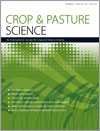CP11204 The application of n-butanol improves embryo and green plant production in anther culture of Australian wheat (Triticum aestivum L.) genotypes
Doubled haploid lines are a valuable genetic resource for plant breeders and researchers and are produced using plant tissue culture techniques. In wheat however, doubled haploid production can be challenging as different varieties of wheat vary in their response to tissue culture. This study demonstrates how the use of the primary alcohol, n-butanol, can result in significant improvements in wheat doubled haploid production. The results can be utilised by wheat doubled haploid programs in Australia and around the world.




